On June 25…
“Writing in a diary is a really strange experience for someone like me. Not only because I’ve never written anything before, but also because it seems to me that later on neither I nor anyone else will be interested in the musings of a thirteen-year old school girl. Oh well, it doesn’t matter. I feel like writing.”
~Anne Frank

1864 – The campaign between Confederate General Robert E. Lee’s Army of Northern Virginia and Ulysses S. Grant’s Army of the Potomac had ground to a halt in mid-June. Having battered each other for a month and a half, the armies came to a standstill at Petersburg, just south of Richmond.
The men of the 48th Pennsylvania sought to break the stalemate with an ambitious project. The brainchild of Lieutenant Colonel Henry Pleasants, the plan called for the men of his regiment – mostly miners from Pennsylvania – to construct a tunnel to the Confederate line, fill it with powder, and blow a gap in the fortifications.
On this date, one day after the plan received the approval of regiment corps commander Ambrose Burnside, digging commenced. For five weeks, the miners dug the 500-foot long shaft.
On July 30, a huge cache of gunpowder was ignited. The plan worked, and a huge gap (170 feet long, 60 to 80 feet wide, and 30 feet deep … photo above) was blown in the Rebel line. The explosion immediately killed 278 Confederate soldiers of the 18th and 22nd South Carolina.
Poor planning by Union officers squandered the opportunity. General George Meade, commander of the Union Army of the Potomac (under the direct supervision of Grant), ordered Burnside not to use the black troops planned for the lead assault, claiming that if the attack failed, black soldiers would be killed needlessly, creating political repercussions in the North.
An untrained division of white soldiers was not prepared for the explosion, and reports indicate they waited ten minutes before leaving their own entrenchments. Once they had wandered to the crater, instead of moving around it as the black troops had been trained to do, they moved down into the crater itself. Since this was not the planned movement, there were no ladders provided for the men to use in exiting the crater.
The Confederates, under Maj. Gen. William Mahone, gathered as many troops together as they could for a counterattack. In about an hour’s time, they had formed up around the crater and began firing rifles and artillery down into it, in what Mahone later described as a “turkey shoot.” The Union suffered 504 deaths in the attack.
The “Battle of the Crater,” as it became known, may have been a tactical Confederate victory but the strategic situation in Petersburg remained unchanged and the siege continued another eight months.
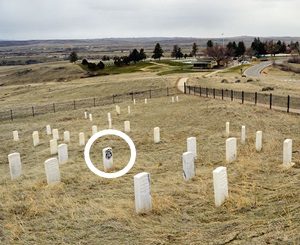
1876 – Native American forces led by Chiefs Crazy Horse and Sitting Bull defeated the U.S. Army troops of Lieutenant Colonel George Armstrong Custer in a bloody battle near southern Montana’s Little Bighorn River.
One year earlier, gold had been discovered in South Dakota’s Black Hills, and the U.S. Army ignored previous treaty agreements and invaded the region. This betrayal led many Sioux and Cheyenne tribesmen to leave their reservations and join Sitting Bull and Crazy Horse in Montana.
By the late spring of 1876, more than 10,000 Native Americans had gathered in a camp along the Little Bighorn River – which they called the Greasy Grass – in defiance of a U.S. War Department order to return to their reservations or risk being attacked.
In mid-June, three columns of U.S. soldiers lined up against the camp and prepared to march. A force of 1,200 Native Americans turned back the first column on June 17. Five days later, General Alfred Terry ordered Custer’s 7th Cavalry to scout ahead for enemy troops. On the morning of June 25, Custer drew near the camp and decided to press on ahead rather than wait for reinforcements.
As the 7th Cavalry entered Little Bighorn Valley, Custer divided the regiment of about 600 men into four battalions, keeping a force of 209 under his own command. Sitting Bull rallied the warriors and saw to the safety of the women and children, while Crazy Horse set off with a large force to meet the attackers head on. Despite Custer’s desperate attempts to regroup his men, they were quickly overwhelmed.
Custer and the men in his battalion were attacked by as many as 3,000 Native Americans. Within an hour, all 210 men were killed, 39 of them on Last Stand Hill itself.
The photograph above shows markers indicating where the 39 bodies were found on Last Stand Hill. Custer’s marker is circled. The other 171 victims were killed in small groups or as they made a run for safety.
Custer Trivia: George Custer was not the only Custer to die at the Little Bighorn. His brothers Thomas (a two time Medal of Honor winner) and Boston died on Last Stand Hill with him.
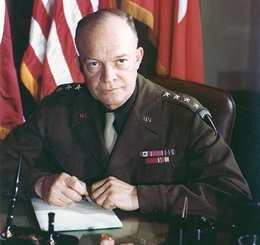
1942 – Major General Dwight D. Eisenhower took command of U.S. forces in Europe.
Although Eisenhower had never seen combat during his 27 years as an army officer, his knowledge of military strategy and talent for organization were such that Army Chief of Staff General George C. Marshall chose him over nearly 400 senior officers to lead U.S. forces in the war against Germany.
After proving himself on the battlefields of North Africa and Italy in 1942 and 1943, Eisenhower was appointed supreme commander of Operation Overlord – the Allied invasion of northwestern Europe.

1947 – Anne Frank’s diary was posthumously published when her father, Otto Frank, printed 1,500 copies in Dutch.
First published under the title Het Achterhuis. Dagboekbrieven 14 Juni 1942 – 1 Augustus 1944, the diary kept by Anne while she was in hiding for two years with her family during the Nazi occupation of the Netherlands, it has since been published in more than 60 languages and has become one of the most influential – and widely read – literary works in history.
It was first published in the U.S. in 1952 under the title of Anne Frank: The Diary of a Young Girl.
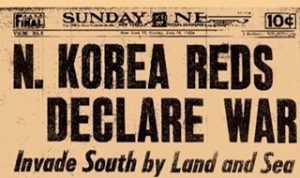
1950 – North Korean forces surprised the South Korean army (and the small U.S. force stationed in the country), crossing the 38th parallel, and quickly heading toward the capital city of Seoul. The United States responded by pushing a resolution through the U.N.’s Security Council calling for military assistance to South Korea. Russia was not present to veto the action as it was boycotting the Security Council at the time.
With this resolution in hand, President Harry S. Truman rapidly dispatched U.S. land, air, and sea forces to Korea to engage in what he termed a “police action.” The American intervention turned the tide, and U.S. and South Korean forces marched into North Korea. This action, however, prompted the massive intervention of communist Chinese forces in late 1950.
The war in Korea subsequently bogged down into a bloody stalemate. In 1953, the United States and North Korea signed a cease-fire that ended the conflict. The cease-fire agreement also resulted in the continued division of North and South Korea at just about the same geographical point as before the conflict.
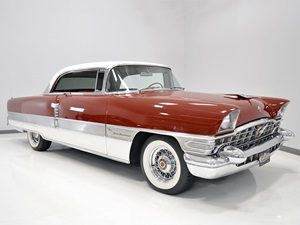
1956 – The last Packard – the classic American luxury car with the famously enigmatic slogan “Ask The Man Who Owns One” – rolled off the production line at Packard’s plant in Detroit, Michigan.
Though the company would continue to manufacture cars in South Bend, Indiana, until 1958, the final model produced on this date in Michigan is considered the last true Packard.
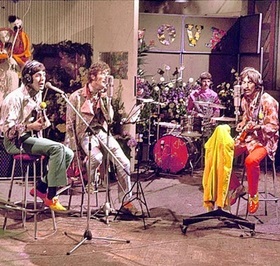
1967 – The Beatles performed All You Need Is Love in Studio One at Abbey Road. The performance was for a live international telecast (Our World), the first televised satellite link-up between 25 countries worldwide … watched by over 400 million people.
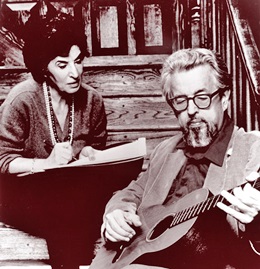
1987 – Boudleaux Bryant died of cancer at the age of 67. If his name doesn’t ring a bell, please allow me to help.
With his wife, Felice, he wrote numerous country music hits, including most of the Everly Brothers standards (All I Have to Do Is Dream, Bye Bye Love, Wake Up Little Susie, Bird Dog and Devoted To You).
Their songwriting success wasn’t tied just to the Everly’s. They also wrote Raining In My Heart (Buddy Holly), Love Hurts (Roy Orbison, and Sleepless Night (Emmylou Harris).
But perhaps their best known (and loved) song was the bluegrass standard Rocky Top, which was named the official Tennessee state song in 1981.
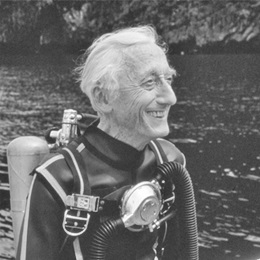
1997 – Jacques Cousteau died of a heart attack at the age of 87.
The explorer, conservationist, author and researcher who studied the sea and all forms of life in water, described his research in a series of books, the most successful being The Silent World: A Story of Undersea Discovery and Adventure.
Cousteau also directed films, most notably the documentary adaptation of the book, The Silent World, shot aboard the ship Calypso.
His documentary television series, The Undersea World of Jacques Cousteau, ran for ten years from 1966 to 1976.
In 1985, he received the Presidential Medal of Freedom from Ronald Reagan.

2009 – Actress Farrah Fawcett lost her three-year battle with cancer at the age of 62.
She appeared in numerous television series in the early 1970s, including recurring roles on Harry O and The Six Million Dollar Man (starring her first husband, Lee Majors). Her breakthrough role came in 1976, when she was cast as Jill Munroe in the ABC series Charlie’s Angels. Despite the wild success of the show, Fawcett left after just one season.
Her initial post-Angels career proved to be a struggle, but she bounced back with her role as a battered wife in the 1984 film The Burning Bed, and she was nominated for a Best Actress Golden Globe Award for her role in Extremities in 1986.
News of Fawcett’s death was largely overshadowed by media coverage of the death of our next entry, which occurred a few hours later…

2009 – Michael Jackson, one of the most commercially successful entertainers in history, died at the age of 50 at his home in Los Angeles after suffering from cardiac arrest caused by a fatal combination of drugs given to him by his personal doctor.
Dubbed the “King of Pop”, Jackson recorded eleven #1 singles as a solo artist, had two more with guest artists, and an additional four as a member of The Jackson Five.
His 1982 album, Thriller is the best-selling album of all time, with estimated sales of over 66 million copies worldwide (according the Guinness Book of Records).
He is one of the few artists to have been inducted into the Rock and Roll Hall of Fame twice, and was also inducted into the Songwriters Hall of Fame and the Dance Hall of Fame.
His other achievements include multiple Guinness World Records including the Most Successful Entertainer of All Time, 13 Grammy Awards, the Grammy Legend Award, and the Grammy Lifetime Achievement Award.
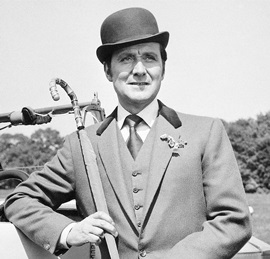
2015 – Actor Patrick Macnee, best known for his role as the secret agent John Steed in the British television series The Avengers, died of natural causes at the age of 93.
He had found moderate success on British television and films in the early 1960s, but had played only a few minor roles in America and was virtually unknown in the states – even though he became a U.S. citizen in 1959 – until he appeared as the suave, slightly flirtatious, and sartorially splendid (complete with the trademark bowler hat and umbrella) British secret agent Steed from 1961-1969.
Macnee went on to appear in films such A View To a Kill, This Is Spinal Tap, The Return of the Man from U.N.C.L.E., and Lime Street.
Compiled by Ray Lemire ©2018 RayLemire.com. / Streamingoldies.com. All Rights Reserved.